


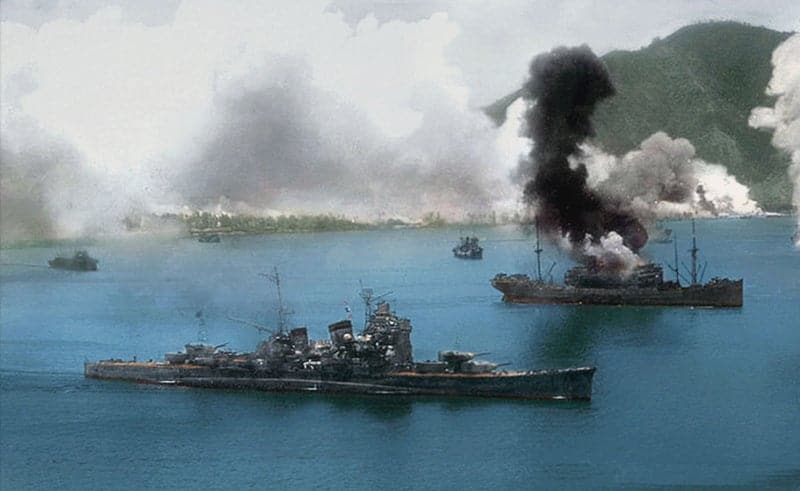

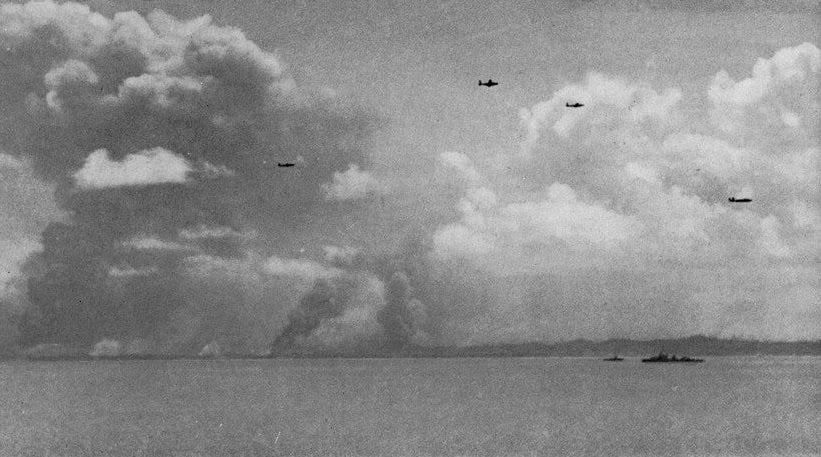

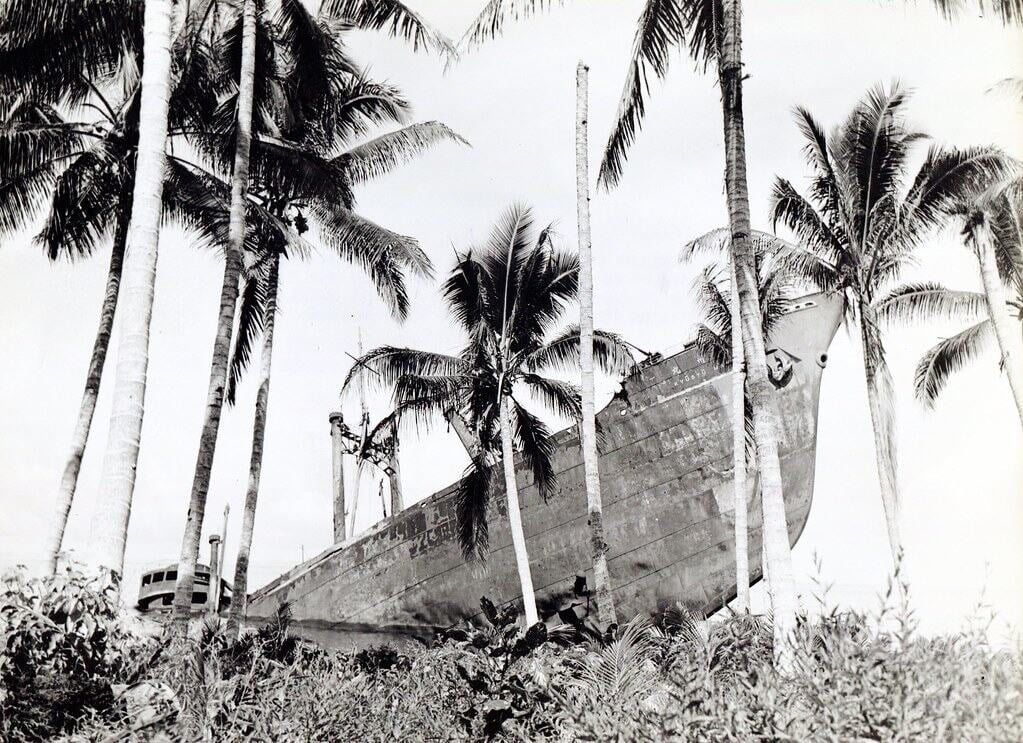



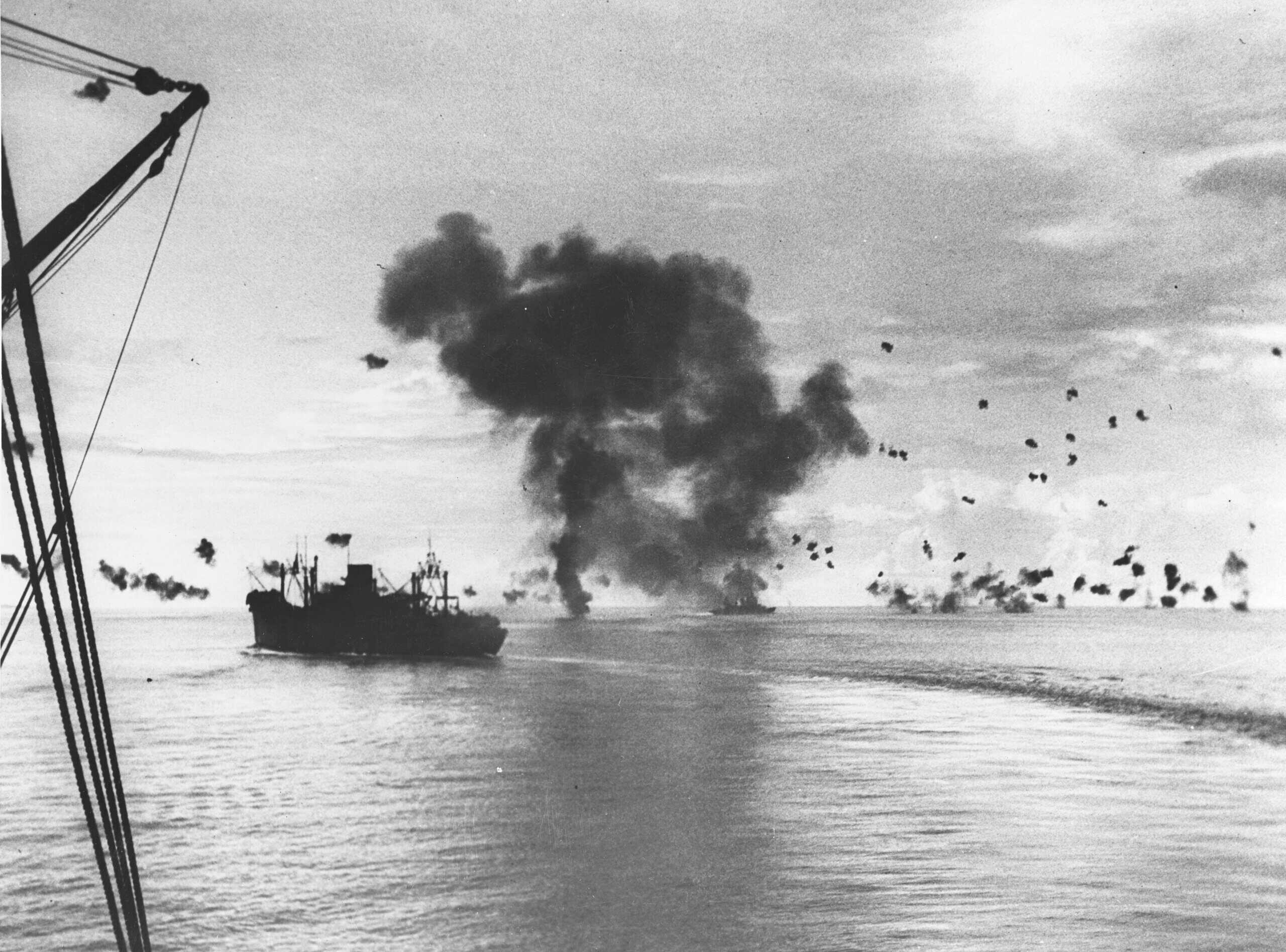

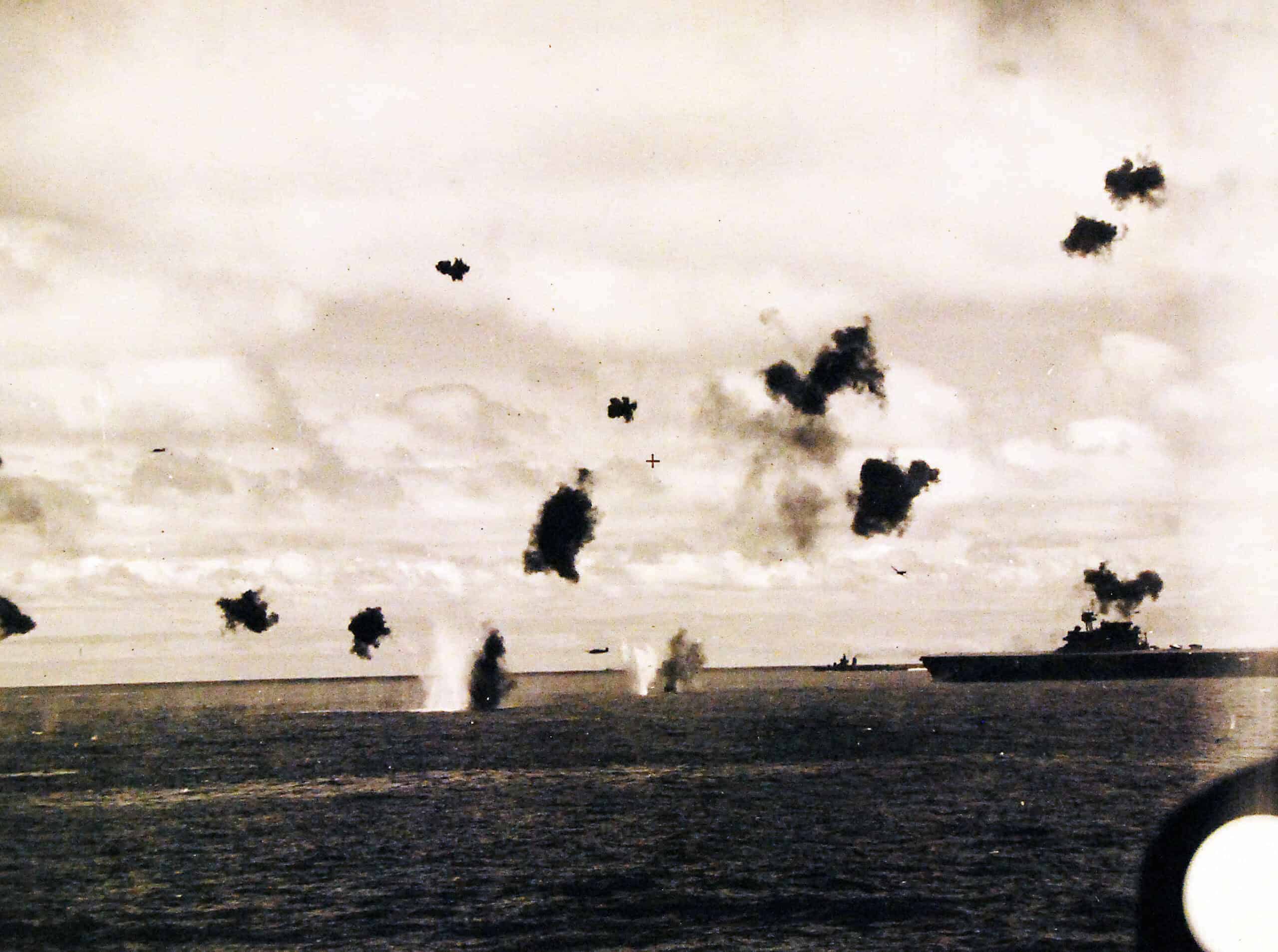




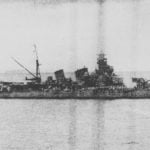
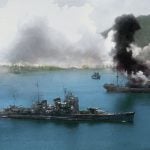




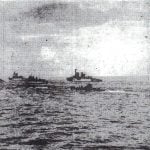


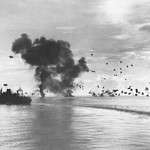

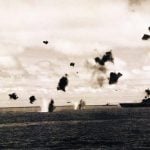

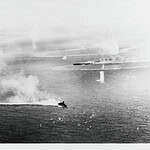
These Were the Largest Naval Battles of WWII, By the Numbers
While much of World War II is remembered as taking place on land or in the sky, the battles in the water were just as important. Protecting shipping lanes, troops, and supplies was all necessary over water, which meant naval vessels and commercial ships were ripe for attack. As a result, some of the largest and deadliest battles in naval warfare history took place during this conflict.
15. Battle of Tassafaronga
- Number of ships: 19
- Outcome: Japanese victory
Another battle considered an embarrassing defeat for the United States was the US missing the target window to surprise attack Japan by more than four minutes at the Battle of Tassafaronga, which meant that all US torpedoes missed their target. Giving away their position, Japan attacked and sunk one US ship and forced the remaining vessels to leave the area.
14. Battle of Cape Esperance
- Number of ships: 20
- Outcome: American victory
The second of four engagements as part of the Guadalcanal naval campaign, the US attacked Japanese naval assets on October 11, 1942. While this is considered a US victory, neither America nor Japan secured any specific area around Guadalcanal due to the battle. Still, it was a morale boost for the US Navy following its defeat at the Battle of Savo Island.
13. Battle of Empress Augusta Bay
- Number of ships: 22
- Outcome: American victory
To stop Japanese activity near its base at Rabaul in Papua New Guinea, the US attacked as part of its Operation Cartwheel effort to block off this area. During the first day of troop landings, the naval fleets of both nations engaged in a two-day conflict with the US, able to successfully turn back Japanese efforts, and would go on to capture the Japanese base.
12. Battle of Kolombangara
- Number of ships: 23
- Outcome: Japanese victory
In another Solomon Islands battle, the Japanese Navy was looking to reinforce its assets in the region when it was intercepted by US and New Zealand light cruisers and destroyers. Japan responded to the attack by sinking one Allied destroyer and damaging three cruisers. While a Japanese naval victory, they could not land their 1,200 ground troops, giving the Allies room to breathe.
11. Battle of the Balikpapan
- Number of ships: 23
- Outcome: Allied victory
Fought in January 1942, the Battle of Balikpapan is more remembered for its ground engagement, but it was the first US Navy surface action in Southeast Asia since 1898. Japan targeted the area to secure more oil resources, while the Dutch destroyed oil facilities to deny Japan its use. Allied forces were stretched, but sunk four transports, indicating the US would be able to sink Japanese ships after Pearl Harbor.
10. Battle of the Sunda Strait
- Number of ships: 24
- Outcome: Japanese victory
This naval battle in the Sunda Strait occurred from late February until the first day of March and was a brutal loss for the Allies. The Allied navy attacked a small Japanese fleet, sinking two ships, while three Japanese ships were sunk by friendly fire. Unfortunately, the Allies' entire fleet, containing three ships, was destroyed, though the battle had no lasting impact throughout the war.
9. Battle of Savo Island
- Number of ships: 31
- Outcome: Japanese victory
The Battle of Savo Island occurred during the Solomon Islands campaign and is considered one of the worst defeats in US naval history. In August 1942, the Japanese Navy responded to Allied landings with eight cruisers and 15 destroyers. Japan, responding with a smaller force, took down multiple ships after an overnight attack that overwhelmed the US ships in a single 30-minute conflict that killed 1,077 US sailors.
8. Battle of the Java Sea
- Number of ships: 42
- Outcome: Japanese victory
During the Battle of the Java Sea, the Allied fleet of four countries suffered a major defeat by a stronger Japanese navy. One of Japan’s most decisive naval victories of the war, this Java Sea battle was an attempt to stop Japan from advancing in the Southern Philippines. Unfortunately, not a single Japanese ship was sunk, while the Allied fleet was almost entirely sunk.
7. Battle of Eastern Solomons
- Number of ships: 62
- Outcome: American victory
The Battle of the Eastern Solomons goes by many names, but it remains the third carrier battle of the war between Japan and the United States. While the US is presented as the winner, both sides suffered significant damage to their fleets as the US sought to protect Allied forces landing in and around the Solomon Islands. After heavy aircraft attacks, both fleets retreated from the war zone.
6. Battle of Santa Cruz Islands
- Number of ships: 65
- Outcome: Japanese victory
The fourth carrier battle between the US and Japan during the war, the Battle of Santa Cruz Islands, the US destroyed dozens of Japanese aircraft, which had a lingering effect. With Japan quickly sinking the US fleet carrier, Hornet, and leaving the USS Enterprise damaged, the US withdrew from the area.
5. Naval Battle of Guadalcanal
- Number of ships: 65
- Outcome: American victory
During the lengthy Guadalcanal campaign on land, the US sought to stop Japan from reinforcing its ground-based efforts on the island. During the battle, both sides suffered heavy losses, including the loss of two US Navy Admirals, the only two to be lost during the war. The Naval Battle of Guadalcanal was the last major naval battle between 1942 and 1943, with the next major maritime combat in 1944.
4. Battle of the Coral Sea
- Number of ships: 78
- Outcome: Japanese victory (sort of)
One of the most challenging engagements for the US Navy in the war, with both sides claiming victory, the Allies claimed to have sunk as many as 37 ships. However, in the Battle of the Coral Sea, Japan sank the US fleet carrier Lexington, which was 25% of the carrier fleet that the US had at the time. Both sides suffered heavily in the first carrier-to-carrier battle of the war, even if Japan missed its goal of capturing more territory.
3. Battle of Midway
- Number of ships: 137
- Outcome: American victory
Six months after the Pearl Harbor attack, the US fleet struck back hard at the Battle of Midway. Intending to capture the strategic island of Midway to lure the US fleet into an attack, Japan bombed Midway and waited for American carriers Japan had missed at Pearl Harbor to arrive. Unfortunately, all four carriers Japan had in the battle were sunk along with 3,000 men, and this battle was considered a major turning point in the war.
2. Battle of the Philippine Sea
- Number of ships: 223
- Outcome: American victory
The second largest battle of World War II, the Battle of the Philippine Sea, involved more than 220 ships as the US 5th fleet and the 1st Mobile Fleet of Japan battled it out. This was the last major engagement in which both nations had carriers facing off in a single conflict. With 1,350 aircraft, it is considered the largest carrier-to-carrier battle in history, though it marked the end of Japanese naval carrier operations.
1. Battle of Leyte Gulf
- Number of ships: 367
- Outcome: Allied victory
Widely considered the single most significant naval battle in history, the Battle of Leyte Gulf involved more than 200,000 naval personnel and over 279 ships. It occurred in the Philippines between October 23 and 26, 1944, and was the last battle involving battleships. The Japanese navy suffered heavy losses, leaving it vulnerable for the rest of the war.
